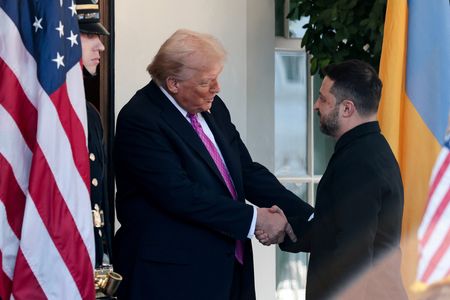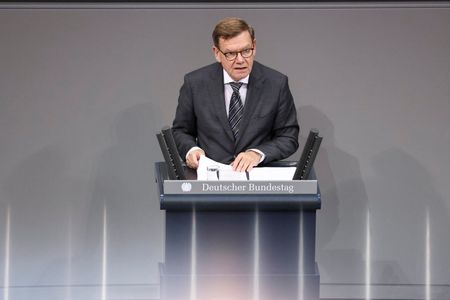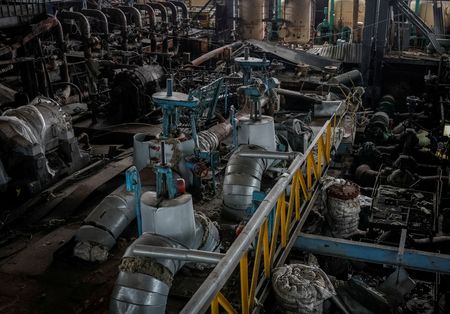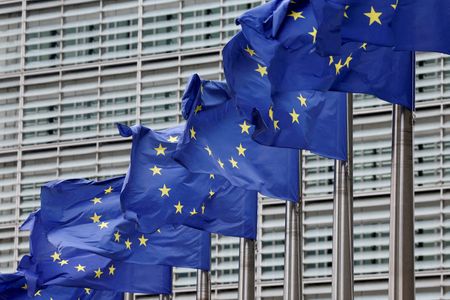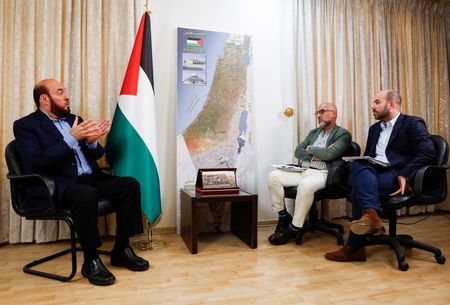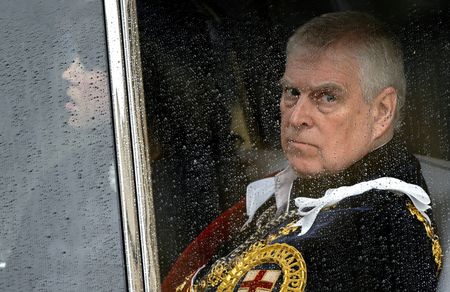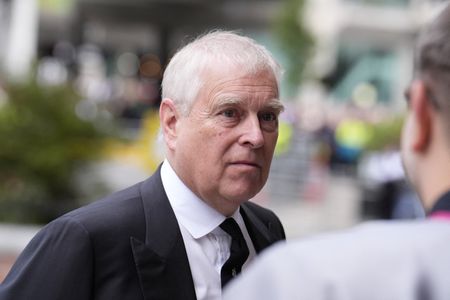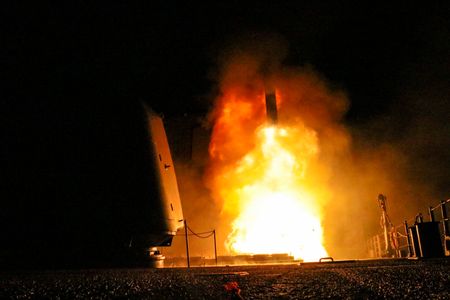By Nandita Bose and Jeff Mason
WASHINGTON (Reuters) -U.S. President Donald Trump appeared cool on Friday on the prospect of sending long-range Tomahawk missiles to Ukraine, suggesting to counterpart Volodymyr Zelenskiy during a White House meeting that they may not be necessary if he can broker a peace deal.
Zelenskiy came to Washington looking for arms to bolster his country’s forces in Ukraine’s three-year-old conflict with Russia, but Trump frequently highlighted his peace summit with Russian President Vladimir Putin in a matter of weeks, as Trump and Zelenskiy spoke with reporters.
That meeting hastily came together on Thursday, making clear that Trump remains intent on brokering a peace deal and taking the air out of Zelenskiy’s pitch for the missiles.
Prior to his private lunch meeting with Zelenskiy, Trump said the two leaders would discuss his call the previous day with Putin.
“Things are coming along pretty well,” Trump told reporters.
Zelenskiy noted how difficult it has been to try and secure a ceasefire. “We want this. Putin doesn’t want (it),” he said.
The Ukrainian leader was frank, telling Trump that Ukraine has thousands of drones ready for an offensive against Russian targets, but needs American missiles.
“We don’t have Tomahawks, that’s why we need Tomahawks,” he said.
Trump responded: “We’re going to be talking about Tomahawks,” Trump said. “We’d much rather have them not need Tomahawks.”
He instead portrayed himself as a mediator between the two warring forces, despite the fact that Russia invaded Ukraine in 2022.
“I think President Zelenskiy wants it done, and I think President Putin wants it done. Now all they have to do is get along a little bit,” Trump said.
BACK TO THE TABLE
It was unclear what Putin had told Trump that prompted him to agree to the meeting, as their August summit in Alaska ended early with no major breakthrough.
The Kremlin said much needed to be decided and that the summit might take place “a little later” than within the two-week period mentioned by Trump.
Trump’s conciliatory tone after the call with Putin raised questions over the near-term likelihood of assistance to Ukraine and reignited European fears of a deal that suits Moscow. A spokesperson for the European Union said it welcomed the talks if they could help bring peace to Ukraine.
But the president also expressed affection for Zelenskiy, at one point praising him for sporting a dark suit jacket after he was knocked earlier this year for visiting the White House without one.
“I think he looks beautiful in his jacket,” Trump said. “I hope people notice … it’s actually very stylish. I like it.”
WAR HAS INTENSIFIED
The U.S. president, who has campaigned for the Nobel Peace Prize, is eager to add to the list of conflicts he says he has been instrumental in ending.
More than three and a half years after its full-scale invasion of Ukraine, Russia has ground out some territorial gains this year, but Ukraine’s top military commander Oleksandr Syrskyi said on Thursday that the Russian offensive had failed.
Putin this month said his forces had taken almost 5,000 square kilometres (1,930 square miles) of land in Ukraine in 2025 – equivalent to adding 1% of Ukraine’s territory to the nearly 20% already held.
Both sides have also escalated attacks on each other’s energy systems, and Russian drones and jets have strayed into NATO countries.
ANALYSTS SEE TALKS AS A DELAYING TACTIC
The White House had seemed in recent days to be increasingly frustrated with Putin and leaning toward granting Zelenskiy fresh support, including the Tomahawk missiles that Ukrainians say would help them inflict more damage to Russia’s war machine.
The debate within the Trump administration over whether to provide the missiles is not entirely new, according to several U.S. and Ukrainian officials. Several officials emphasized before Trump’s meeting with Zelenskiy that no decision had been made, and opinions differed on how Trump would ultimately decide the matter.
Putin’s move was meant to make the U.S. transfer of such weapons less likely, said Max Bergmann, a Russia expert at the Center for Strategic and International Studies.
“It does seem that Putin’s outreach is perhaps designed to thwart the potential transfer of Tomahawks to Ukraine, so Putin is wanting to put that back in the box,” Bergmann said. “It strikes me as sort of a stalling tactic.”
Mykola Bielieskov, a senior analyst at Come Back Alive, a Ukrainian non-governmental organization that is a major procurer of military equipment for the Ukrainian armed forces, said Tomahawk missiles would level a playing field that is tipped toward Russia, but that they would not be a silver bullet.
“We don’t expect Russia to crumble after one, two or three successful strikes,” Bielieskov said. “But it’s about pressure, constant pressure. It’s about disrupting the military-industrial complex.”
(Reporting by Jeff Mason, Nandita Bose, Gram Slattery and Trevor Hunnicutt; Additional reporting by Olena Harmash in Kyiv, Cassel Bryan-Low and Tom Balmforth in London, Daphne Psaledakis in Washington, Bhargav Acharya in Toronto, Anita Komuves in Budapest and Anastasia Lyrchikova in Moscow; writing by James Oliphant; editing by Philippa Fletcher and Rod Nickel)

